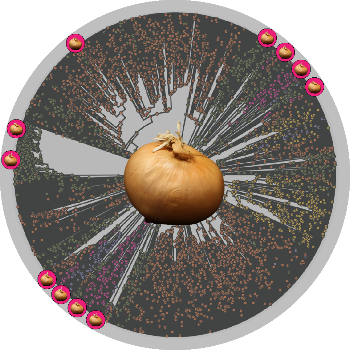Bulbs
The evolution of leaves into fascinating structures.
What is a bulb?
Leaves have been molded by evolution into an extraordinary number of unique structures.
One such trait is the bulb, which has evolved at least 11 times in monocots and is rarely lost once evolved. Bulbs are made of a reduced
stem surrounded by layers of leaves. Iconic examples include tulips, hyacinths and
onions, and less commonly known examples include the bulbous bluegrass, Poa bulbosa. Although similar in appearance, there is a diversity of bulb morphology that is
hidden underground. The leaves of bulbs are comprised of either unswollen leaf bases,
swollen scale leaves, swollen leaf bases, or both leaf bases and scale leaves.  Additionally, there are tunicate bulbs, which are those with dried, papery outer coverings
(tunic) that protect the inner portions of the bulb from drying or injury (e.g., onions,
tulips). There are also imbricate bulbs, which are bulbs without dried outer coverings
(e.g., lilies), which leaves the bulb scales exposed to the elements. The multiple,
independent origins of this trait provide us with an excellent opportunity to study
the evolutionary and developmental processes that have led to the repeated evolution
of these rotund structures.
Additionally, there are tunicate bulbs, which are those with dried, papery outer coverings
(tunic) that protect the inner portions of the bulb from drying or injury (e.g., onions,
tulips). There are also imbricate bulbs, which are bulbs without dried outer coverings
(e.g., lilies), which leaves the bulb scales exposed to the elements. The multiple,
independent origins of this trait provide us with an excellent opportunity to study
the evolutionary and developmental processes that have led to the repeated evolution
of these rotund structures.
